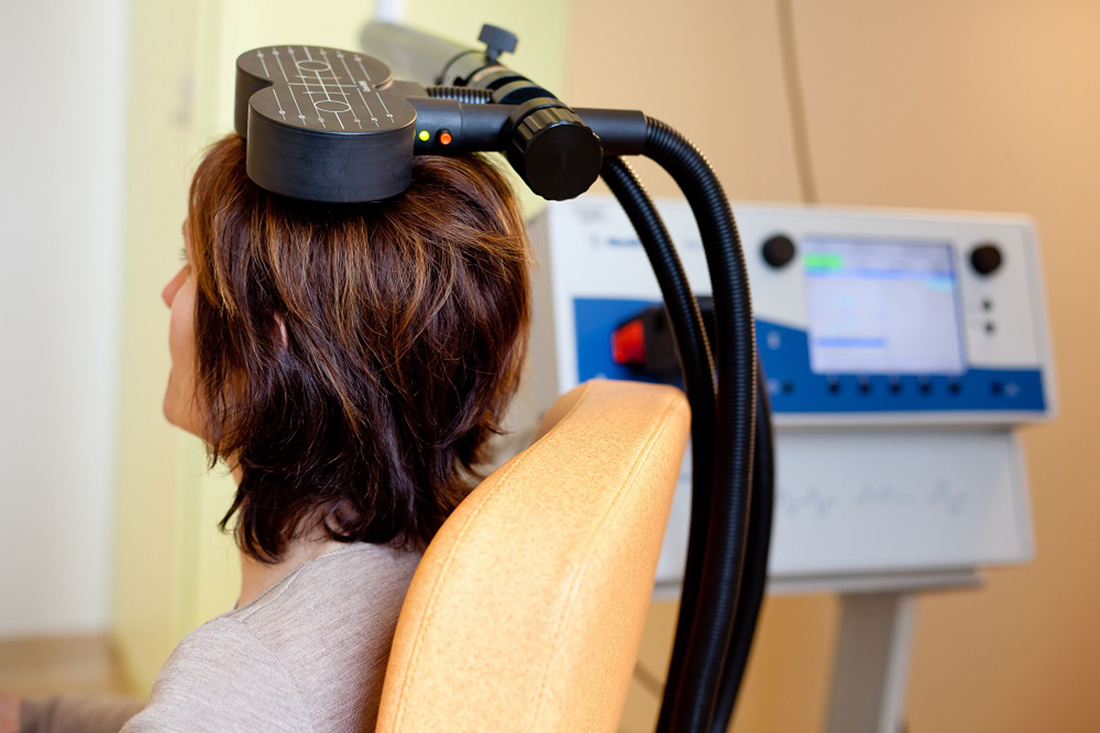What is Transcranial Magnetic Stimulation?
Transcranial magnetic stimulation (TMS) is a noninvasive technique that uses magnetic fields to stimulate nerve cells in the brain. It works by generating a brief magnetic field on the scalp using an electromagnetic coil placed over the head. This magnetic field easily passes through the scalp and skull to induce small electrical currents in the brain region located under the coil. The electric currents generated by TMS are strong enough to depolarize neurons and induce action potentials but not strong enough to cause injury or pain.
Mechanism of Action
When the TMS coil is placed on the head over a specific brain area and a brief magnetic pulse is delivered, it creates a small electric current within the underlying region of the cortex through electromagnetic induction. This activates cortical neurons in a similar manner as the neurons are activated by their normal electrical and chemical inputs. Repeated TMS pulses can alter the excitability of the targeted cortical region either increasing or decreasing it depending on the parameters of stimulation like stimulation frequency.
Areas in which TMS is commonly used
Depression
Transcranial Magnetic Stimulator is approved by the FDA for the treatment of depression in adults who have failed to achieve satisfactory improvement from one prior antidepressant medication in the current episode. Several clinical trials have found TMS to be an effective treatment for reducing symptoms in patients with major depressive disorder.
Migraine and chronic pain
TMS has shown efficacy in reducing the frequency and intensity of migraine headaches as well as chronic pain in conditions like fibromyalgia when delivered to specific sites in the motor cortex. The repetitive stimulation appears to induce plastic changes in the brain networks involved in pain processing and modulation.
Movement disorders
TMS has been explored for movement disorders like Parkinson’s disease and stroke rehabilitation. Low-frequency TMS of the motor cortex inhibits neuronal activity and improves motor symptoms by restoring the balance of activity between cortical areas in these conditions.
Schizophrenia
While antipsychotic medications are first-line therapy, TMS has shown promise as an add-on treatment for managing auditory hallucinations, paranoid delusions and negative symptoms in schizophrenia. It enhances prefrontal cortical control over sub-cortical dopamine regions disrupted in this disorder.
Safety Considerations
Being noninvasive, Transcranial Magnetic Stimulator generally carries very minimal risks when administered appropriately by trained personnel. The most common side effects include brief muscle twitches, headaches, localized scalp pain or discomfort. Seizures are rare, occurring in less than 1 in 1000 exposures. Strict safety guidelines ensure proper screening of individuals at increased risk and precautions like limiting the number of pulses delivered at once. Long term effects are still unclear but repeat studies show no significant cognitive or structural brain changes. As with any medical procedure, relative contraindications need consideration like the presence of cochlear/brain implants, pregnancy etc. Proper hydration, rest between sessions and limiting other concurrent medications help minimize potential side effects.
Parameters of Treatment
TMS treatment parameters like stimulation intensity, frequency, total number of pulses and duration of therapy can vary depending on the specific condition and needs to be determined by the treating physician. For example, in depression, standard protocols involve delivering 3000-4000 pulses per session at high frequency (10 Hz or more) over the left dorsolateral prefrontal cortex daily for 4-6 weeks. Lower frequencies like 1 Hz are used for other conditions like migraines that may require training over multiple sessions. Clinical response is closely monitored with established rating scales to determine continuation of therapy. Combination with pharmacotherapy or psychotherapy is also being explored for best outcomes.
*Note:
1. Source: Coherent Market Insights, Public sources, Desk research
2. We have leveraged AI tools to mine information and compile it
About Author - Vaagisha Singh
Vaagisha brings over three years of expertise as a content editor in the market research domain. Originally a creative writer, she discovered her passion for editing, combining her flair for writing with a meticulous eye for detail. Her ability to craft and refine compelling content makes her an invaluable asset in delivering polished and engaging write-ups. LinkedIn

 by
by 


